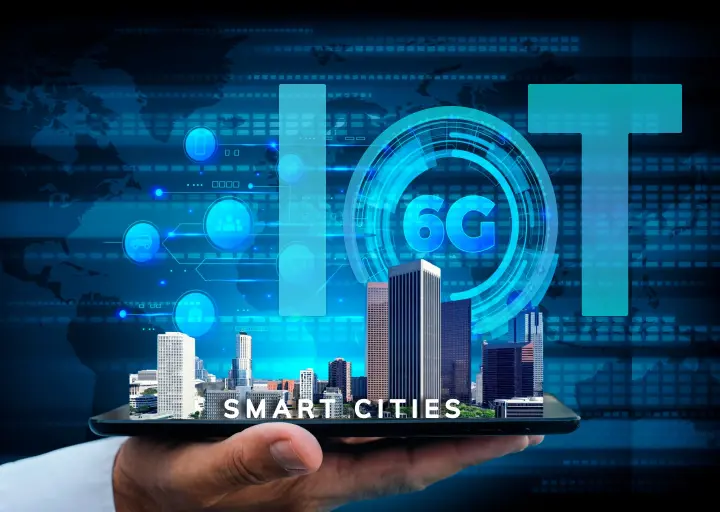
Introduction
In the age of rapid urbanization, smart cities have emerged as a revolutionary approach to urban development, leveraging Internet of Things (IoT) technologies to enhance living standards, optimize resources, and improve service delivery. This guide explores how IT services and smart technologies can be integrated into the development and management of smart cities, creating more efficient, sustainable, and livable environments.
1. Understanding Smart Cities
Smart cities utilize digital technologies to enhance performance across various sectors, including transportation, energy, and public safety. The integration of IoT plays a crucial role in enabling real-time data collection, analysis, and decision-making processes.
2. Key Components of Smart Cities
- Smart Infrastructure: Incorporates sensors and connected devices to monitor and manage resources like water, energy, and waste.
- Smart Transportation: Uses IoT to improve traffic management, reduce congestion, and enhance public transport services.
- Smart Energy Management: Implements renewable energy sources and smart grids to optimize energy consumption and reduce emissions.
- Smart Governance: Engages citizens through digital platforms, enhancing transparency and service delivery.
3. The Role of IT Services in Smart City Development
IT services are integral to the successful implementation of smart city initiatives. They provide the necessary infrastructure, security, and support for IoT systems. Key areas include:
- Data Management and Analytics: Collecting, storing, and analyzing data generated by IoT devices to inform urban planning and policy decisions.
- Cybersecurity Solutions: Protecting sensitive data and infrastructure from cyber threats is crucial in smart city operations.
- Cloud Computing: Offers scalable resources for data storage and processing, facilitating efficient management of city services.
4. Implementing Smart Technologies
To build and manage smart cities effectively, municipalities should consider the following smart technologies:
- IoT Sensors and Devices: Deploying a network of sensors for real-time monitoring of environmental conditions, traffic flow, and energy usage.
- Smart Traffic Management Systems: Utilizing AI algorithms to optimize traffic signals and reduce congestion.
- Smart Lighting Solutions: Installing LED streetlights equipped with sensors to adjust brightness based on pedestrian activity.
- Mobile Applications: Developing apps for citizens to report issues, access services, and receive updates on city initiatives.
5. Challenges in Building Smart Cities
Despite the numerous benefits, several challenges hinder the successful implementation of smart city projects:
- High Initial Costs: The upfront investment required for smart technologies and infrastructure can be a significant barrier.
- Interoperability Issues: Ensuring that different technologies and platforms work together seamlessly is critical for success.
- Data Privacy Concerns: Safeguarding citizen data while ensuring transparency can be complex.
6. Future Trends in Smart City Development
As technology evolves, the future of smart cities will be shaped by several trends:
- AI and Machine Learning: Enhanced data analytics will lead to better decision-making and predictive capabilities in urban management.
- 5G Connectivity: Faster and more reliable communication networks will enable more devices to connect and share data in real time.
- Sustainability Initiatives: Emphasis on green technologies and practices will drive the development of eco-friendly smart cities.
Why Does Society Need IoT Smart Cities?
The rapid pace of urbanization presents significant challenges, such as overcrowding, pollution, and resource scarcity. Smart cities, driven by IoT and smart technologies, offer innovative solutions to these problems, making cities more efficient, sustainable, and livable. Here’s why society needs smart cities powered by IT services and IoT:
1. Efficient Resource Management
Smart cities use IoT-enabled systems to monitor and manage vital resources like water, energy, and waste. Sensors and smart meters provide real-time data, enabling cities to optimize usage, reduce wastage, and enhance efficiency. Smart energy grids, for example, can balance energy supply and demand, leading to lower consumption and cost savings.
2. Enhanced Public Services
The integration of IT services and smart technologies allows for seamless public service delivery. Smart cities provide better access to healthcare, education, and government services through digital platforms. Real-time monitoring systems ensure quick response times to emergencies, improving public safety and citizen satisfaction.
3. Improved Traffic Management
Urban mobility is a growing challenge in cities. Smart technologies such as IoT-powered traffic sensors, AI-based route optimization, and real-time public transport updates reduce congestion and improve traffic flow. This leads to fewer delays, less pollution, and more efficient transportation networks.
4. Sustainability and Environmental Impact
With smart cities, sustainability is at the forefront. Through IT services, smart technologies like renewable energy systems, smart grids, and green building practices can be integrated into urban planning. This reduces carbon footprints, conserves energy, and minimizes environmental degradation, promoting greener, eco-friendly cities.
5. Enhanced Security and Public Safety
IoT-powered surveillance systems, connected street lighting, and AI-driven analytics ensure smarter crime prevention and faster emergency response times. IT services enable secure data transmission, protecting both infrastructure and citizens from potential threats.
6. Citizen Engagement and Quality of Life
Smart cities utilize IT services to build platforms where citizens can engage in governance, report issues, and provide feedback on public services. This leads to greater transparency, improved decision-making, and a higher quality of life. Smart technologies also enhance access to healthcare, education, and recreation, creating a better living environment.
7. Economic Growth and Innovation
Smart cities foster innovation through tech-driven environments, attracting investments and creating new business opportunities in areas like IT services, telecommunications, and green technologies. The focus on digital infrastructure supports a knowledge-based economy, promoting job creation and long-term economic growth.
Conclusion
Building and managing smart cities through the integration of IoT, IT services, and smart technologies offers an innovative solution to urban challenges. By leveraging these advancements, cities can enhance the quality of life for their residents, improve operational efficiencies, and create sustainable environments for future generations. Embracing the smart city revolution is not just an option; it’s a necessity for cities looking to thrive in an increasingly interconnected world.


